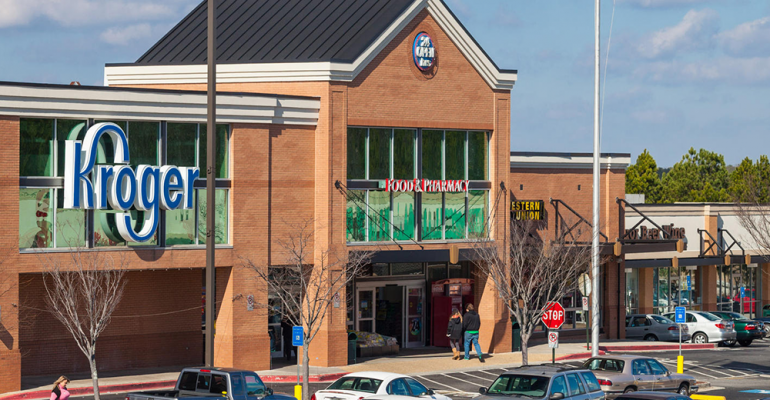Amid headlines of retailer bankruptcies and shuttered stores, supermarkets are seen as a plus by the commercial real estate sector.
Shopping centers anchored by grocery stores “continue to exceed expectations” and are high on the list of desirable sites among retail property investors, according the May 2018 Retail Investor Sentiment Report from Real Capital Markets (RCM), a Carlsbad, Calif.-based commercial real estate marketplace.
“There is a general consensus that grocery-anchored retail centers will be around forever and, as long as they are, will be among the most attractive and highly sought-after investments,” the report said. “Underscoring this notion are statistics that show the number of grocery-anchored centers brought to market via RCM’s platform nearly doubled over the last two years.”
Of investors surveyed by RCM, 48% cited anchored shopping centers — especially supermarket-anchored properties — as the most preferred retail investment. Next were strip centers (23%), malls (8%) and convenience-focused centers (7%).
“Retail properties known as power centers, because of a higher concentration of big-box retailers, may be among the least attractive,” the RCM report said. “Generally, because they are heavily reliant on soft goods and susceptible to consumers turning to e-commerce outlets for these products, this type of center is among the least attractive and faces the greatest threats.”
Big-box store vacancies were the top concern of retail property investors, cited by 39% of those polled. Also of concern were shifting consumer habits due to e-commerce (32%) and shifting retailer strategies due to e-commerce (23%). Seventy-one percent of respondents said the state of the retail industry has the biggest impact on their investment position.
Though a rising number of consumers and supermarket chains are embracing online grocery services, retail real estate investors don’t see this trend as making physical grocery stores irrelevant, according to RCM.
“Survey participants believe that while consumers are increasing their online purchases, most are hesitant to buy groceries online. Further, when in the middle of planning and/or preparing a meal, last-minute items can’t be purchased and delivered on time when purchased online,” the report explained. “Because of this convenience, grocery-anchored centers with the appropriate small shop space are in demand by retailers that rely on traffic generated by the grocers.”
According to Joe Cosenza, vice chairman of The Inland Real Estate Group, successful grocery chains — including national and regional operators like Kroger, Whole Foods Markets and Sprouts Farmers Market — know that they must cater to customers and the overall shopping experience or risk losing market share. And that includes brick-and-mortar.
“No one can buy an ice cream cone, get their laundry, put gas in their car or check out a liquor store on Amazon,” Cosenza commented in the report. “These are the kinds of tenants that tag along with all good grocery stores.”
A key focus in the retail industry is developing more meaningful engagement with consumers — particularly Millennials, who exhibit less retailer loyalty than other generations of shoppers, Michael Federle, senior vice president of capital markets at Transwestern San Francisco, noted in the RCM report. For example, smartphones enable shoppers to search for their lowest price available for a given item and then have it delivered to their home.
That’s leading retailers and their commercial real estate partners to rethink the shopping experiences in their properties, according to RCM. Inland’s Cosenza, for instance, recommended in the report that some owners of grocery-anchored community centers reduce the amount of retail to spur growth. The rationale is that a well-located, 125,000-square-foot center with a 45,000-square-foot supermarket might perform better with fewer retail tenants and some added apartments.
“Challenging times call for creative measures to produce valued and desired outcomes,” RCM Chief Operating Officer Tina Lichens said in the report. “We’re seeing some of that creativity as retailers reinvent themselves in the face of the challenges brought to light by e-commerce and other shifting consumer buying patterns.”





